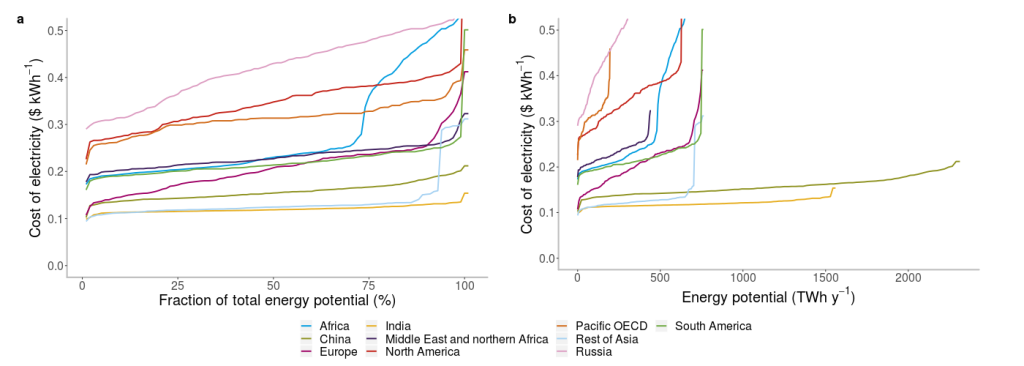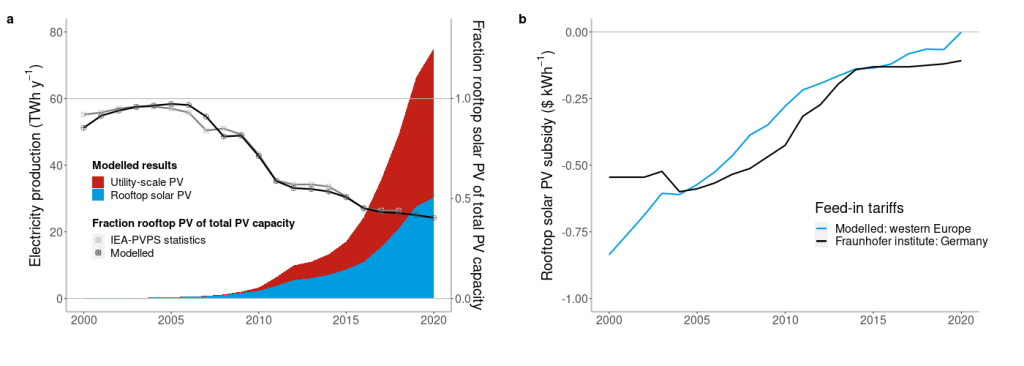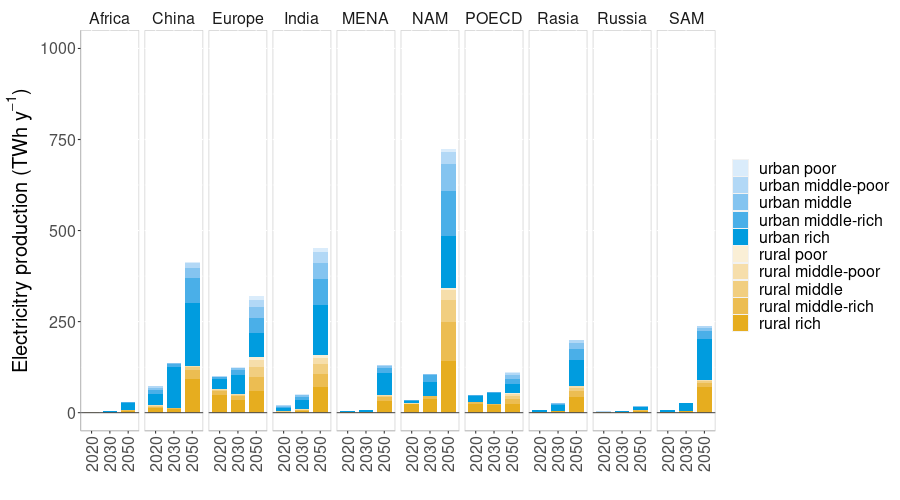The role of residential rooftop PV in long-term energy and climate scenarios
The use of solar photovoltaic has strongly increased in the last decade. A significant part of this growth comes from home owners installing rooftop photovoltaic. Despite this key role, most long-term model-based scenarios do not consider decentralized supply of rooftop photovoltaic but concentrate on utility-scale photovoltaic instead. In this paper, we implement rooftop photovoltaic in the Integrated Assessment Model IMAGE to study its possible role in energy and climate scenarios.
Highlights
- Rooftop PV key driver in the PV market, thus modelled in IMAGE IAM.
- Global estimated potential 8.3 PWh y-1: 1.5 times residential electricity demand.
- Scenarios show key role for rooftop PV but regional characteristics crucial.
- Income levels and grid electricity prices dominate regional deployment.
- Low-irradiation western Europe better than high-irradiation Middle East.
- Artikel | 8 September 2020The role of residential rooftop photovoltaic in long-term energy and climate scenarios
We first calculated the global technical and economic potential to derive regional cost-supply curves for rooftop photovoltaic. The global suitable roof surface area was assessed at 36 billion m2, or 4.7 m2 capita 1, leading to a potential for rooftop photovoltaic of 8.3 PWh y-1, roughly 1.5 times the 2015 global residenal electricity demand.

Next, we have added a new decision in the IMAGE model allowing household investment in rooftop photovoltaic based on the comparison of the whole-sale electricity price with the price of rooftop photovoltaic. First we checked whether out internal model simulations, could mimick historical feed-in tariff subsidies and capacity data.

In further the baseline scenarios, adding rooftop photovoltaic could lead to a 80–280% increased share of photovoltaic electricity production in 2050 (i.e. from 6% to 17% in total power production).
This increase depends on regional characteristics that are essential to the deployment of rooftop photovoltaic: differences in social-economic and policy factors (capital costs, household income, and electricity prices) are considerably more important than physical factors, such as solar irradiance.
